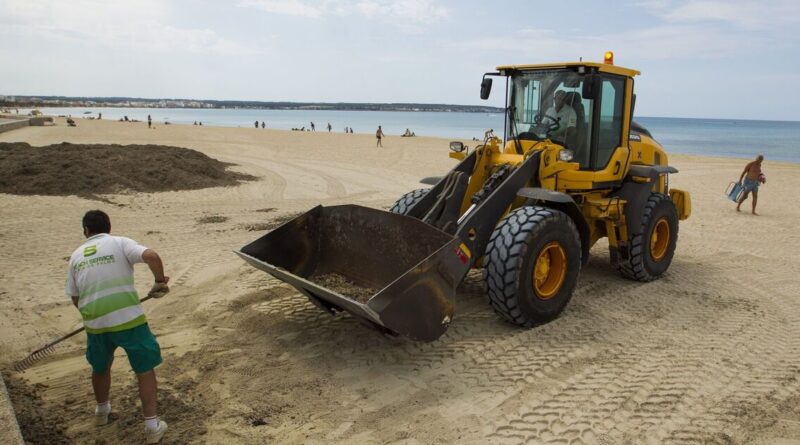Majorca’s beaches ‘to turn brown’ as Spain seaside towns hit with warning | World | News
Majorca’s beaches could soon “turn brown” with an invasive smelly seaweed known to accumulate to 3ft in height, experts have warned.
The popular holiday destination is one of five areas hit with a warning after rugulopterix okamurae, a native seaweed found in Pacific, turned up in the port of Barcelona.
The algae has already inundated areas in the Atlantic ocean and the Mediterranean, blanketing seabeds and causing the plant to float to the surface. Currents have then carried the smelly algae to the coast where it has inundated beaches and turned them brown.
While the algae is not bad for the environment, it is known to smell awful. Murcia and Valencia have been flooded with rugulopterix okamurae while Tarifa, a seaside town on the southern tip of Spain, cannot afford to remove the brown specimen from its beaches.
Tourists have been warned Majorca could be next after traces were found in the port of Barcelona. According to Direct Ferries, tourists can catch a ferry to Majorca from Barcelona six days a week.
Fiona Tomas, a researcher at the IMEDEA Mediterranean Institute of Advanced Studies, told regional Spanish press that authorities had to act now to minimise its impact. She said: “We have the knowledge and we can carry out effective preventive management to avoid an invasion or, at least, minimise its impact.”
Professor Maria Altamirano, from the University of Malaga, said though it had not yet been detected, the Balearic Islands, which includes Majorca, are a “highly favourable” area for the nuisance seaweed. She said: “The authorities should look at minimising its spread.”
Last year, Marbella was hit particularly bad by the algae which one local councillor said impacted tourism and fishing. The councillor said: “The costs to remove these vegetables from the beaches are increasingly higher and tourism and fishing are the most affected productive sectors. It’s a worrying and growing problem.”
In same areas, the seaweed has been left to accumulate to 3ft in height, forcing bathers to climb over the slimey stuff to get into the sea. The city council in Marbella has spent €800,000 (£673k) in three months removing 75 tons of the invasive algae from its beaches every day.
Four loaders, three trucks, two pick-ups, a tractor with a trailer and two beach cleaners scour the beachhead between 5am and 11am. In one week, they managed to scrape up 180 tons of seaweed from the beaches of Estepona.
The local council said it expects to spend more than €1,000,000 (£841k) a year to keep its beaches clean. The mayor of the municipality, José María García Urbano, said: “The proliferation of this algae has a negative impact on both the tourism sector and the fishing industry, and it is the town councils that have to use their own resources to alleviate the effects of this situation.”





